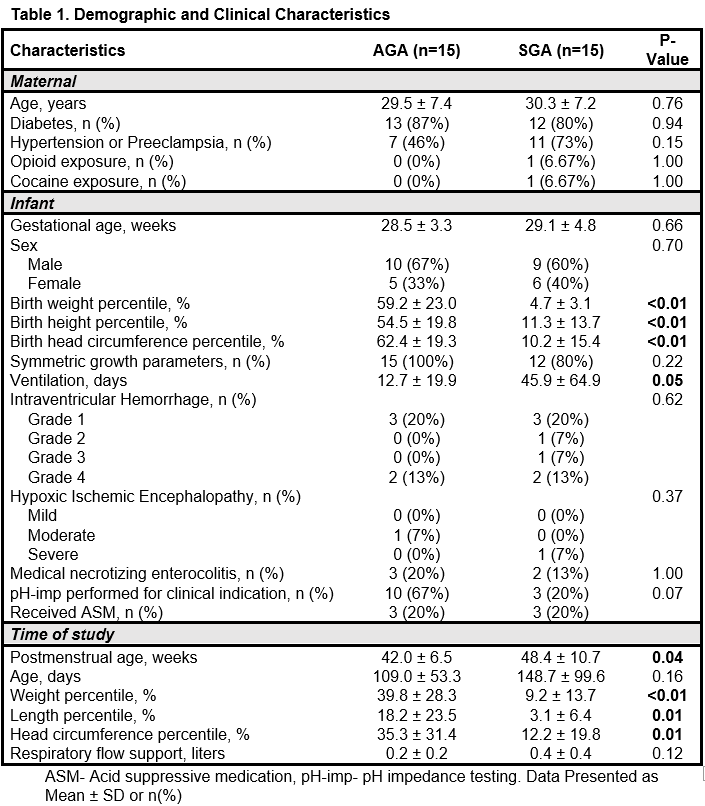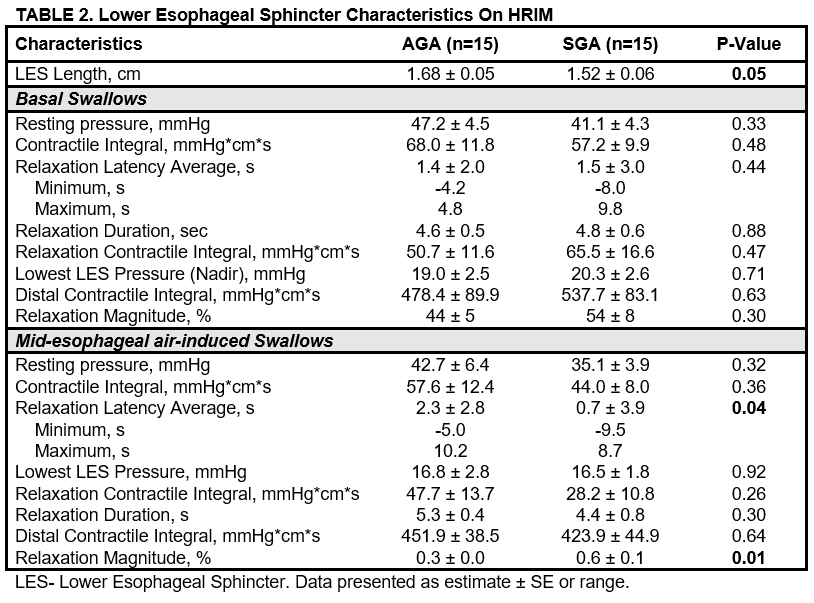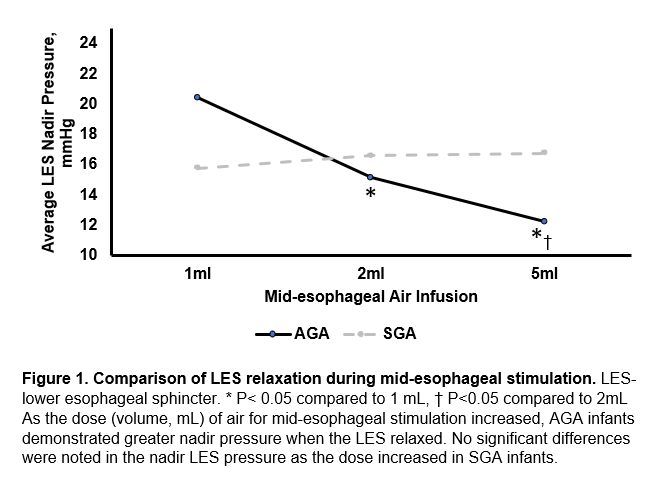Neonatology
Session: Neonatal Fetal Nutrition & Metabolism 4: Nutrition in the NICU
460 - Analysis of Lower Esophageal Sphincter Characteristics in Small- versus Appropriate- for Gestation Infants
Sunday, May 5, 2024
3:30 PM - 6:00 PM ET
Poster Number: 460
Publication Number: 460.2291
Publication Number: 460.2291

Gurpreet Kaur, MD FAAP (she/her/hers)
Neonatal and Infant Feeding Disorders
Nationwide Children's Hospital
Columbus, Ohio, United States
Presenting Author(s)
Background: Infants born small for gestational age (SGA) are at an increased risk of chronic aerodigestive and oral feeding difficulties and troublesome symptoms amidst chronic growth failure, thus requiring prolonged tube feeding. Role of pharyngo-esophageal motility reflex characteristics in such situations is not clear. The lower esophageal sphincter (LES) being innervated by cholinergic and nitrergic neurons facilitating contractility and relaxation respectively, was the subject of this investigation to examine potential mechanisms.
Objective: Our aim was to investigate the LES characteristics in infants born small for gestational age (SGA) and compare with appropriate for gestational age (AGA) neonates, by characterizing the contractile and relaxation reflex responses to basal spontaneous swallows and mid-esophageal stimulus-induced peristaltic reflexes.
Design/Methods: We examined high-resolution pharyngo-esophageal manometry (HRPM) recordings from 30 infants at 47-50 weeks postmenstrual age (PMA). Because growth may play a part in the sphincter structure and kinetics, we stratified data based on SGA if birth weight < 10% vs. AGA if birth weight between 10-90%. HRIM data were analyzed for spontaneous swallows and mid-esophageal stimulus-induced adaptive swallows using graded volumes (1.0-5.0 mL) of air. Comparisons were made using linear mixed effect model, and generalized estimating equation for continuous outcomes, and multinomial and logistic regression for categorical outcomes. Tukey adjustment for multiple comparisons was used between infants that were SGA and AGA for maternal, infant, and LES characteristics. Specifically, the following LES characteristics: length, resting pressure, contractile integral, response type, duration of relaxation, latency, and distal contractile integral were included.
Results: Despite the chronological maturity of our SGA cohort, their LES relaxation occurred earlier and often prior to the start of the swallow (Table 2). Additionally, SGA infants demonstrated greater LES relaxation magnitude. With mid-esophageal stimulation, unlike AGA infants exhibiting decreasing lowest LES pressure when moving from 1-5 mL volumes, SGA infants did not demonstrate dose-related relaxation of the LES. (Figure 1).
Conclusion(s): The LES characteristics on HRIM are distinct between SGA vs. AGA infants. Hypersensitivity and increased inhibition at the GE junction without appropriate dose-related relaxation responses are seen in SGA infants in comparison to their AGA counterparts.



